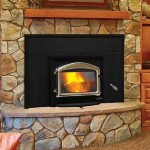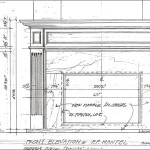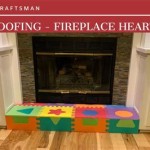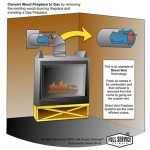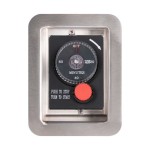Remodeling A Brick Fireplace: Ideas and Execution
A brick fireplace is a classic architectural feature, often serving as the focal point of a living room or den. Over time, however, its aesthetic appeal might diminish due to outdated design, wear and tear, or simply a desire for a fresh, modern look. Remodeling a brick fireplace offers an opportunity to revitalize the space and align it with current design trends while preserving the inherent charm and functionality of the fireplace itself. This article explores various remodeling ideas and considerations, providing insights into transforming a dated brick fireplace into a stylish and functional centerpiece.
The scope of a brick fireplace remodel can range from a simple cosmetic update, such as painting or whitewashing the brick, to a more extensive renovation involving structural modifications, such as installing a new mantel or adding decorative elements. The best approach depends on factors such as the existing condition of the fireplace, the desired aesthetic, and the overall budget. Careful planning and consideration of these factors are crucial for a successful remodeling project.
Assessing the Existing Fireplace and Defining Your Style
Before embarking on any remodeling project, a thorough assessment of the existing fireplace is essential. This includes inspecting the brickwork for cracks, chips, or other signs of damage. Any structural issues should be addressed before proceeding with cosmetic enhancements. It's also important to evaluate the functionality of the fireplace. Is the damper working correctly? Is the firebox in good condition? Addressing these issues upfront will ensure that the remodeled fireplace is both aesthetically pleasing and safe to use.
Defining your desired style is the next crucial step. Consider the overall aesthetic of your home and how the fireplace will complement it. Common styles include:
- Modern: Characterized by clean lines, minimalist design, and often incorporating materials like concrete, metal, and glass.
- Traditional: Emphasizes classic elements, such as ornate mantels, carved details, and warm, inviting colors.
- Rustic: Features natural materials like wood and stone, creating a cozy and comfortable atmosphere.
- Contemporary: A blend of modern and traditional elements, often incorporating bold colors and geometric shapes.
Determining a budget early in the process is critical in defining the scope of the project. A limited budget might necessitate focusing on cosmetic improvements, such as painting or adding a decorative mantel shelf. A larger budget allows for more extensive renovations, including replacing the brick facade, installing a new firebox, or adding custom built-ins.
Cosmetic Remodeling Ideas: Paint, Whitewash, and Stain
Cosmetic remodeling offers a cost-effective way to transform the look of a brick fireplace without undertaking major structural changes. Painting, whitewashing, and staining are popular options, each offering a different aesthetic effect.
Painting: Painting a brick fireplace provides a clean, uniform look. Select a high-quality masonry paint designed for use on brick surfaces. Before painting, thoroughly clean the brick to remove any dirt, dust, or soot. Apply a primer specifically formulated for masonry to ensure proper adhesion of the paint. Choose a color that complements the overall design scheme of the room. Light colors, such as white or cream, can brighten up a space and create a more modern feel. Dark colors, such as gray or black, can add drama and sophistication.
Whitewashing: Whitewashing involves diluting paint with water and applying it to the brick surface. This technique creates a semi-transparent finish, allowing some of the natural brick texture to show through. Whitewashing is a good option for creating a rustic or farmhouse-style aesthetic. The level of transparency can be adjusted by varying the ratio of paint to water. Experimenting with different ratios on a small, inconspicuous area before applying it to the entire fireplace is advised.
Staining: Staining brick allows you to change its color while preserving its natural texture. Choose a masonry stain specifically designed for brick surfaces. Stains penetrate the brick, providing a more durable and long-lasting finish than paint. Staining is a good option for those who want to enhance the natural beauty of the brick without completely covering it up. A variety of stain colors are available, from subtle earth tones to bold, vibrant hues.
Before applying any of these treatments, ensure the bricks are cleaned properly. This is best done using a wire brush and a solution of TSP (trisodium phosphate) or a specialized brick cleaner. Always wear protective gear, including gloves and eye protection, when working with cleaning chemicals.
Structural Remodeling Ideas: Mantels, Surrounds, and Inserts
Structural remodeling involves more significant changes to the fireplace, such as replacing the mantel, updating the surround, or installing a new fireplace insert. These projects can dramatically transform the look and functionality of the fireplace, but they also require more time, effort, and investment.
Mantels: The mantel is a key design element that can significantly impact the overall appearance of the fireplace. Replacing an outdated mantel with a new one can instantly update the look of the fireplace. Consider the style of your home when choosing a new mantel. A rustic mantel made of reclaimed wood would complement a farmhouse-style home, while a sleek, modern mantel made of marble or concrete would be more appropriate for a contemporary space. A variety of materials are available for mantels, including wood, stone, concrete, and metal. The size and proportions of the mantel should be carefully considered to ensure that it is aesthetically pleasing and functional.
Surrounds: The surround is the decorative material that frames the firebox. Updating the surround can dramatically change the look of the fireplace. Common materials for surrounds include tile, stone, brick, and wood. Tile surrounds offer a wide range of design options, from classic subway tile to intricate mosaics. Stone surrounds add a touch of natural elegance to the fireplace. Brick surrounds can be used to create a more traditional or rustic look. Wood surrounds can be painted or stained to match the overall design scheme of the room.
Fireplace Inserts: A fireplace insert is a self-contained heating unit that is installed inside the existing firebox. Fireplace inserts offer improved energy efficiency and increased heating capacity compared to traditional open fireplaces. Inserts are available in a variety of fuel types, including gas, electric, and wood-burning. A gas fireplace insert offers convenience and ease of use, while a wood-burning insert provides the ambiance of a traditional wood fire. Electric fireplace inserts are a good option for those who want the look of a fireplace without the need for venting or fuel storage. When selecting a fireplace insert, consider the size of the firebox, the desired heating capacity, and the overall style of the room. Professional installation of a fireplace insert is highly recommended to ensure safety and proper operation.
When undertaking structural modifications, consulting with a qualified contractor or fireplace specialist is highly recommended. They can advise on the feasibility of the project, ensure that all building codes are met, and provide expert installation services.
Consider adding a hearth extension that complements the mantel and surround. The hearth extension is the non-combustible material that extends out from the base of the fireplace. It is designed to protect the flooring from sparks and embers. Hearth extensions can be made of tile, stone, brick, or concrete. The size and shape of the hearth extension should be proportional to the size of the fireplace. A larger fireplace will require a larger hearth extension.
Built-in shelving flanking the fireplace can add both functionality and aesthetic appeal. Custom built-ins can provide storage for books, media equipment, and other items. They can also be used to display decorative objects. Built-ins can be designed to match the style of the fireplace and the overall design scheme of the room.
Lighting is also an important consideration when remodeling a fireplace. Adding sconces or recessed lighting above the fireplace can highlight its features and create a warm, inviting atmosphere. Dimmable lighting allows you to adjust the brightness to suit your needs.
Remodeling a brick fireplace is a project that requires careful planning, attention to detail, and a clear understanding of your desired style and budget. By considering the various options available and seeking professional advice when needed, it's possible to transform a dated brick fireplace into a stunning focal point that enhances the beauty and functionality of any living space.

Brick Fireplace Makeover Before And After Ideas Cool Makeovers Remodel Home

Brick Fireplace Makeover Before And After Decorating Painting Id Painted Fireplaces Paint

10 Fireplace Makeover Ideas Before And After Regency
:max_bytes(150000):strip_icc()/MadetobeaMommaBefore-5bb2476446e0fb002607ad4f.jpg?strip=all)
Before And After Fireplace Makeovers

25 Beautiful Diy Brick Fireplace Makeovers

Diy Painted Brick Fireplace Makeover On A Budget Before After The Confused Millennial

10 Fireplace Makeover Ideas Before And After Regency

16 Red Brick Fireplace Makeover Ideas

Diy Fireplace Makeover Wood Slat

Fireplace Makeover Ideas Bright Green Door The Lettered Cottage
Related Posts

